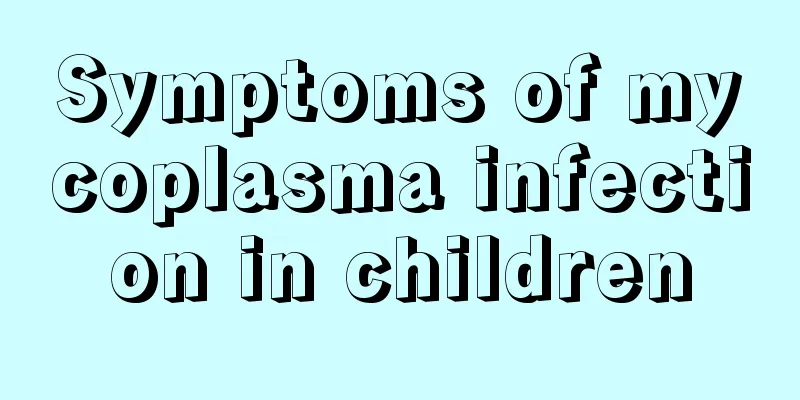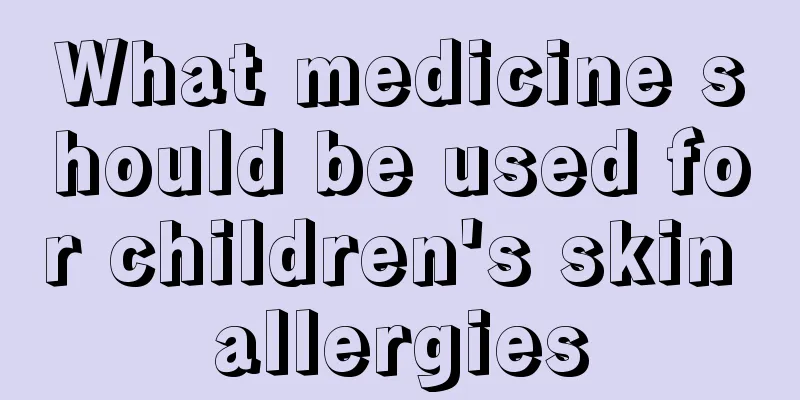What are the symptoms of eczematous dermatitis in children?

|
When a baby is born, his body and face are not particularly smooth, but this is normal. However, if the child's body is not kept clean for a long time, it will easily cause the child to develop eczematous dermatitis. At this time, it is still very sad for the child, although he cannot express it out loud. So what are the symptoms of eczematous dermatitis in children? Infant eczema is eczema that occurs in infants under 2 years old and is a common and frequently occurring disease in infants. It could be infantile eczema or it could be atopic dermatitis in infancy. It begins to occur in the 2nd or 3rd month after birth. Skin lesions mainly occur on the cheeks, forehead, and scalp, and in some cases may develop to the trunk and limbs. The rash characteristics can be divided into two types. Exudative eczema often occurs in obese infants with exudative constitution. It initially occurs on the cheeks, with erythema and unclear borders, and densely distributed needle-tip papules, papulovesicles, blisters and exudate on the erythema. When the exudate dries, it forms yellow scabs of varying thickness. Severe itching, scratching, and friction often cause some of the scabs to peel off, revealing bright red eroded surfaces with large amounts of exudate. In severe cases, the entire face and scalp may be affected. If there is secondary infection, pustules may be seen, accompanied by local lymph node enlargement and even fever. In a small number of children, due to improper treatment, the disease spreads to the whole body and becomes erythroderma, which is often accompanied by diarrhea, swollen lymph nodes, etc. The dry type of rash is common in thin babies. It is characterized by light red to dark red patches, dense small papules without blisters, dry skin with no obvious exudation, and grayish white bran-like scales on the surface. The face, trunk, and limbs are often affected. In chronic cases, there may also be mild infiltration, hypertrophy, cracking, scratches or bloody scabs. Therefore, when a child shows these symptoms, he must be treated in time. This is better for the child's body, so as not to miss the best treatment time, which will be bad for the child's future physical recovery and will easily reduce the child's immune function. Scrub the child frequently. |
<<: What causes stomach pain and vomiting in children?
>>: How to relieve stomach pain and nausea in children?
Recommend
The baby's right leg is thicker than the left leg
After a child is born, he or she needs careful ca...
Newborns have brain hypoxia, parents should pay attention!
Neonatal cerebral hypoxia is a very serious condi...
What to do if baby has chapped mouth
The baby's skin is relatively delicate. In li...
Do newborns sweat?
When a newborn is just born, there are many pheno...
How to reduce inflammation when baby's neck is soaked and water is flowing
For many new mothers, they may not have encounter...
What to do if your 2-year-old baby vomits
Babies are relatively common in our lives. Women ...
How to teach children to speak
Children are the most beautiful and purest things...
Nine nutrients necessary for children's growth and development
Nutrition experts say that children's bodies ...
Reasons why children are disobedient
All parents hope that their children are sensible...
Symptoms of a newborn's fussiness
In our lives, there are always some babies who ar...
What is the best way to prevent bronchial asthma in children?
Children are always vulnerable. They need our tim...
Symptoms of pneumonia in five-month-old babies
Pneumonia can affect not only adults but children...
What happens when a baby has a fever and convulsions?
We attach great importance to the physical health...
What are the clinical manifestations of nephrotic syndrome in children?
It is not uncommon for children to suffer from ne...
Six breakfast foods to keep your child nutritious
Breakfast nutrition is the basis of the day, so i...









